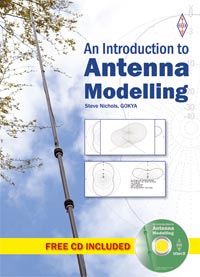
G0KYA's propagation charts from UK for January 2011
This is the period when the low bands (160m, 80m and 40m) come into their own. The last two winters have seen great low-band propagation, with stations in the USA and Caribbean being worked on 80m well after sunrise. If you do nothing else keep an eye on 160m, 80m and 40m this winter as the relatively low levels of solar activity, the long winter nights and low D layer absorption means that DX may be heard all night long.
Band by band:
On 160m (1.8MHz or Top Band), solar absorption will prevent skip during the daylight hours. You should be able to work other UK stations out to about 50-80 miles via ground wave. The band will open around sunset and openings up to around 1,300 miles should be possible, with frequent openings up 2,300 miles. DX openings to the east from the UK should be possible around midnight and to the west before sunrise for well-equipped stations.
On 80m (3.5MHz), expect a similar pattern to Top Band with DX openings at night with peaks at midnight and around sunrise (greyline openings). Openings around the UK and out to around 500 miles should be possible during the day and between 750-2,300 miles at night. A low, horizontal antenna will be useful for relatively local, NVIS (Near Vertical Incidence Skywave) signals, but lower angle radiation, such as obtained with a vertical, will be required for DX.
Listen for DX from the West just before and just after sunrise – these are the months you are likely to hear US stations around 3795MHz in the morning.
40m (7MHz) is also another great DX band at this time of year. Forty metres should open to DX is an easterly direction during the late afternoon and towards the south at sunset. Paths during the afternoon may also include W6 (west coast USA) in mid winter. Openings to the west, including long path to VK/ZL should be possible after midnight and should peak just before sunrise. Relatively local contacts should be possible during the day, although low critical frequencies will mean that it is difficult to work other UK stations while perfectly possible to talk to European stations.
20m (14MHz) is likely to provide great DX openings during the hours of daylight. Peak conditions will be a couple of hours after sunrise for paths to the east and a couple of hours before sunset for paths to the west. Contacts up to 2,300 miles should be possible during daylight hours, but the band is likely to close to DX an hour or so after sunset. Occasional DX openings towards South America may be possible after nightfall.
17m/15m (18MHz/21MHz) should provide fairly good DX openings during daylight hours, although 15m may struggle to open at all on some days if the flux doesn’t rise above 80-90. The period from noon to late afternoon may be best, but both bands are likely to close at sunset and remain closed until some time after sunrise the following day.
12m/10m (24MHz/28MHz) may be good or bad depending on how the solar cycle progresses. If the flux stays in the 70s-80s there may be many days where there are no signals at all, although occasional brief openings to DX may be possible. If the solar flux heads towards the high 90s or more than 100 then good DX should be possible during daylight. A brief spell of sporadic-E can sometimes occur in the New Year resulting in very strong, but short-lived propagation on 10m out to around 1,300 miles.
A quick tip – if 28MHz seems dead listen to 27.555MHz USB which is a CB calling frequency. Activity there usually means that 10m may open up shortly after.








